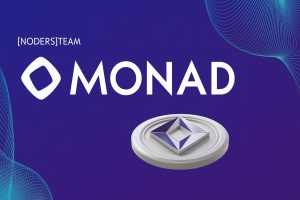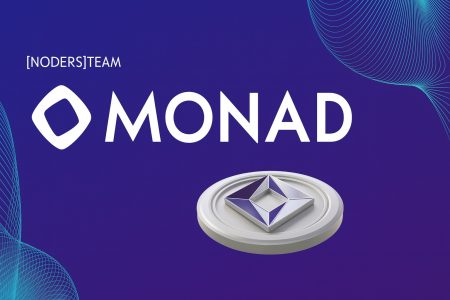On March 31, 2025, Graphite Network launched its Market Staking Program, an innovative model that rewards active traders rather than passive holders.
It reflects a major change in the decentralized finance (DeFi) space, where active trading has overtaken passive staking as the preferred approach for many users.
Source: X
Fueling this shift are the growing challenges of passive staking, centralization risks that hand too much control to large players, and market saturation that’s shrinking returns for everyday users. Together, these factors have made staking increasingly unattractive in today’s fast-moving, participation-driven DeFi landscape.
When asked about this change in trend, Marko Ratkovic, the CTO of Graphite Network, who has previously spoken to Crypto Daily, shared his perspective:
“Staking used to be the go-to for earning rewards, but it’s not keeping up with what users want anymore. DeFi is all about action now: people are trading, swapping, and engaging with protocols daily – that’s where the profits lie. The current state of DeFi shows a clear preference for dynamic participation models over static yield mechanisms.”
Explaining the logic behind the Market Staking Program, Marko added:
”If most of the market activity comes from people actually trading and providing liquidity, it makes sense to reward them directly. With the Market Staking Program, we’re shifting incentives to match real user behavior – no more waiting around for passive yields. Users who help keep the market moving should see the benefits in real time.”
The Decline of Traditional Staking Models and The Rise of Active DeFi Users
Recent data shows a clear shift away from staking towards more active engagement in DeFi, and Graphite Network is stepping in to meet that demand.
Dapp Radar’s report indicates that in the first quarter of 2025, DeFi had about 1.2 million daily active users, a 25% increase from 2024.
Decentralized exchanges (DEXs) are the major driver of this growth. DEX trading is currently seeing significant activity, with over $8.39 billion in daily volume and $47.32 billion traded over the past week, reflecting a 6.57% increase week-on-week. DEXs now account for nearly 30% of total crypto exchange activity, underlining the growing preference for active market participation over passive strategies like traditional staking.
Staking, on the other hand, has been losing its appeal. Data from Stelareum shows that the total value locked in staking is decreasing. For example, Lido, a major player in liquid staking, dropped 10% from $50 billion in Q4 2024 to $45 billion in Q1 2025.
On Ethereum, where 28% of the total supply (34 million ETH) is staked, new deposits fell by 15% compared to the previous year, as reported by Datawallet.
This decline is seen across other networks as well. Polkadot’s staked value decreased by 12% to $7.8 billion, while Avalanche experienced an 18% drop in new staking activity. Cosmos also saw its TVL fall by 10% to $4.5 billion.
Even leading staking networks like Solana, where 67% of its supply is staked (totaling $12 billion), and Cardano, with 62% staked (totaling $15 billion), reported TVL declines of 8% and 5%, respectively.
Staking still supports network security, but its strict structure cannot compete with DeFi’s lively and adaptable nature, confirming the decline of traditional models and the rise of active users and new reward models as the key trends of 2025. That’s exactly the direction Graphite Network is taking with its Market Staking Program.
Rewarding Real Contributors: Market Staking Program in Details
Graphite Network’s Market Staking Program is designed to reward the ones powering everyday market interactions. The program offers weekly rewards in @G, the blockchain’s native coin, starting with a total pool of 50,000 G shared equally across Polygon, Ethereum, Arbitrum, and Binance Smart Chain (BSC).
Each network receives 12,500 @G, which is awarded to the top 10% of traders based on their trading volume on supported decentralized exchanges (DEXs). On Polygon, these include Uniswap, Quickswap, and Curve; on Ethereum, Uniswap, Balancer, and Curve; on Arbitrum, Uniswap, Camelot, and Balancer; and on BSC, Pancakeswap.
To ensure rewards reflect real market activity, each network must reach a trading volume 15 times its reward pool. For instance, if the reward pool is set at 12,500 @G in the first week, the total trading volume needs to reach 187,500 @G in that week before payouts are released.
The reward pool is set to increase by 20% every four weeks, growing alongside trading activity to keep incentives appealing for high-volume traders and market makers, who are expected to earn the largest shares.
To keep things transparent, Graphite Network publishes volume targets and payout details on X every Monday, and participants can track their positions in real time on the program’s dashboard. As of this writing, the first week of the program is nearly over, with the most notable trading activity so far recorded on Ethereum and Arbitrum.
Graphite Network’s Infrastructure and Roadmap
Graphite Network is an L1 blockchain that uses Proof-of-Authority (PoA) and the Polymer 2.0 algorithm for secure, efficient operations.
With privacy-preserving KYC powered by Zero-Knowledge Proofs, it maintains reasonable transparency, enabling third-party applications to verify users’ personal data without exposing sensitive details.
Graphite Network’s reputation-based Trust Score system evaluates accounts’ credibility based on their trading history, KYC status, and community engagement.
This architecture helps reduce fraud in DeFi, strengthens DAO governance, supports authenticity in NFTs, all while protecting user privacy. By embedding reputation directly into its framework, Graphite Network also defends against Sybil attacks, helping build a more secure, transparent, and sustainable blockchain ecosystem.
On top of its sophisticated L1 infrastructure, Graphite Network’s 2025 roadmap looks to introduce several initiatives and L2 applications that will support liquidity, usability, security, and expand global access to Web3.
The table below details the key initiatives planned for 2025, outlining their anticipated launch quarters, purposes, and expected impacts:
Initiative
Launch Period
Purpose
Impact
@G CEX Listing
Q1-2 2025
To expand trading access by listing @G on centralized exchanges
Increases liquidity and attracts more traders
Bank Integration
Q2 2025
To build a connection between banks and blockchain, making integration smooth and fully compliant
Ensures trust and faster adoption of blockchain by traditional financial institutions
Phonebook Reputation MVP
Q3 2025
To connect trust scores to phone numbers to increase DeFi safety
Enhances DeFi trust by providing a reliable reputation system for users
Hotspot Bundle Initiative
Q3 2025
To provide a hardware-software solution to enable decentralized internet access in underserved areas
Expands global access to DeFi by connecting remote users to the network
Dating App MVP
Q4 2025
To establish a first-of-its-kind dating platform that uses reputation scores to prevent fakes and stat manipulation
Extends reputation use beyond finance, integrating trust-based mechanics with social applications
Voting System
Q4 2025
To incorporate voter reputation to prevent manipulation in a voting system
Elevates security and fairness in decentralized voting processes
Graphite Network’s Market Staking Program comes at a time when more and more users are choosing to actively participate in DeFi. But, its broader vision for 2025 feels in step with what many in the crypto space are looking for: practical, forward-thinking tools that make crypto more accessible, active, and connected to real-world use.
Disclaimer: This article is provided for informational purposes only. It is not offered or intended to be used as legal, tax, investment, financial, or other advice.
Credit: Source link






